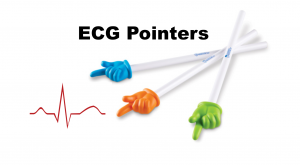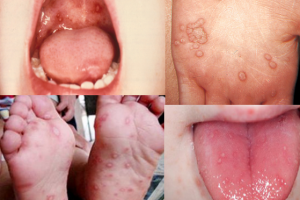Authors: Anthony Rodriguez, MD (EM Resident Physician, Denver Health); Spencer Tomberg, MD (EM Attending Physician, Denver Health); and Matthew Folchert, MD (Orthopedic-Hand Attending Surgeon, Denver Health) // Reviewed by: Alex Koyfman, MD (@EMHighAK); Manny Singh, MD (@MPrizzleER); Brit Long, MD (@long_brit)
Case:
A 35-year-old right hand dominant male presents to your ED with a deep laceration to his left pinky finger that occurred while working as a chef. He reports he has numbness to the palmer aspect of his left pinky finger, and as part of your musculoskeletal exam you evaluate for neurovascular and tendon injury. Prior to performing a digital nerve block to repair the laceration, you should evaluate the following
Evaluation:
Perfusion
- Check capillary refill (should be less than 2-3 seconds)
- Attach a pulse oximeter to the injured digit
- Should be ≥ 90% with a good plethysmogram
- Use a doppler to evaluate the radial & ulnar digital arteries
- If you obtain a signal on the pulp, then the digit is being perfused
- Make sure to check DISTAL to the laceration
Flexor Tendons
- Flexor Digitorum Profundus (FDP)
- Mechanism: flexes the distal interphalangeal joint (DIP)
- Evaluation: hold the proximal interphalangeal joint (PIP) in extension while the patient attempts to flex the DIP joint
- Flexor Digitorum Superficialis (FDS)
- Mechanism: flexes the proximal interphalangeal joints (PIP)
- Evaluation: hold adjacent fingers in extension while the patient attempts to flex injured finger at the PIP joint
Extensor Tendons
- Mechanism: extends/straightens the DIP and PIP joint
- Evaluation: ask patient to straighten the digit out.
- These tendons have lateral bands and a central slip near the PIP joint
- Central Slip Evaluation:
- Have patient bend at the PIP and provide resistant distal to the PIP joint
- Ask patient to hold extension at the digit
- Normal result: DIP joint should remain loose
- This is known as the “Elson Test”
- Abnormal result: DIP joint would become rigid
- This is due to the force being transferred to the lateral bands down into the DIP joint, instead of through the central slip
Nerves
- If available, can use two-point discriminator tool
- Normal sensation should be detected between 4-6 mm
- Otherwise, use a bent paper clip and measure 4-6 mm between points
- Start by assessing a non-injured digit or opposite hand to have a control result
- Always ask patients to close their eyes
- Begin with widest measurement and move towards shorter measurement
- Provide support to the digit being tested
- Make sure to test IN-LINE (or vertical) to evaluate a single nerve’s dermatome
- Testing across (or horizontal) the digit can pick up-cross innervation from the adjacent digital nerve
[videopress C5BaozMG]








